Bora Yoon: Sunken Cathedral
The experimental artist’s new album is a culmination of seven years of works, blending everyday objects with celestial voices

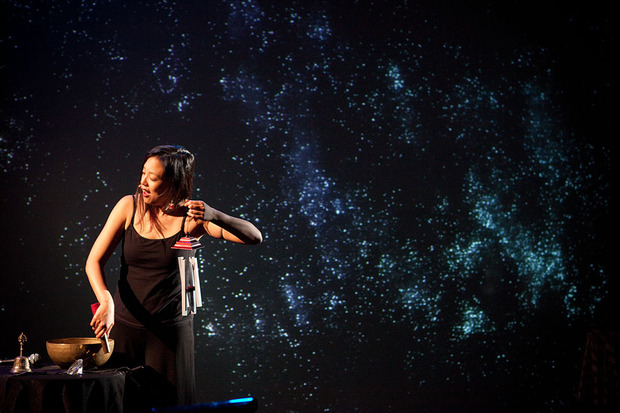
Chicago-raised, NYC-based composer (and professional soprano) Bora Yoon has the uncanny ability to blend recorded samples that depict everyday life—her mother’s voicemails, Bible pages, aluminum cans, loose change—with the dreamiest and holiest of instruments, including her own powerful voice that reaches high notes with ease and the equally enthralling organ at the Church of Ascension in NYC, where she works. The 2014 TED Fellow collected seven years of work and laminated them, so to say, into a single record, Sunken Cathedrals. Digital devices live alongside songs inspired by medieval chant, spoken word is paired with shortwave radio transmissions and cellphones, even barking dogs play in her choir—all without ever feeling that this isn’t music.
For work that’s considered experimental, Yoon’s music is pleasantly digestible, because it’s grounded in something very human. It’s relatable for reasons listeners mightn’t be able to (or need to) pinpoint and we spoke with Yoon to learn more about the sound works she’s composed. And even when her phone rings from an incoming text, a strange array of futuristic tones seems to add something meaningful to our conversation.

While you create sound from bowing Tibetan bowls, turning on metronomes, or even using water, is your voice your main instrument?
I started with piano and violin—and then I picked up guitar. I started singing in junior high and so choral music really became my first love—and you can hear that in the work that I do now, it’s very choral.
In Ithaca College, I majored in music and voice and creative writing; so I kind of cobbled the education I wanted together. I was actually a folk singer-songwriter in college. [laughs] I have like a few albums that are very different than what I do now—but they’re out there. [laughs] There is still the writer in me and the person who writes poetry, and lyrics and prose, but I’m finding different ways for that to come back into the music now without having to be so imitative of other people. When you’re an artist—at a certain point—you’re
riffing on your heroes and who you’re inspired by, before you really find what you do. I see that as a period where I figured out what I do, but that writer is still in me and I’m still trying to figure out how that is coming back—and that actually is in the full-length record.
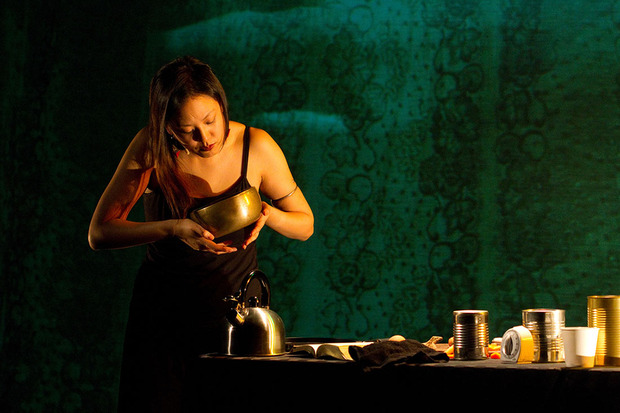
How did you go from classical and folk to delving into multimedia?
I’ve always been working with electronics, but very, very lo-fi. I used to go to a bunch of underground electronic music parties in high school and college. I’m from Chicago so, the whole underground scene there. I was in the music conservatory, I would sing in the coffee shops on weekends, and I would go to underground parties during the week. I was happy because those were my three musical identities that I always loved, and they all gave me something different.
I still to this day believe that, that’s what I think what I’m doing—is always trying to weave those three things together. Still be classical and have the ambience of where it’s really complex and beautiful; still be organic and telling a story like in folk music. Always be coming from the heart, or there should always be a purpose or story behind what you’re saying—and the electronic stuff is just a means to put in different samples or sound design or noises that trigger memory or association and different times and places. So that you start to mix all of these atmospheres together.
I think that’s the power of music—it’s not held by linear time.
I think that’s the power of music—it’s not held by linear time. The fact that there is so many layers on it, and layers of different times—different field recordings from different places and studio takes and things that are put on top of each other—you can create a compound sense of time. Or this kind of liminal space for a listener to then figure out what space they’re in. By combining all of these sounds together, you end up kind of outlining a circle—which the listener then gets. It’s like when you’re making a film: if you put four objects together, the mind will already start to process why the four objects are together, it’s called a compound image. And that’s what I’m doing with sound—I put these sounds together and they all trigger different things, but the fact that they are happening at the same time, it will create the negative space of what the real meaning of the song is. It’s what all these things are constructing that leaves the space open for the listener to find it.
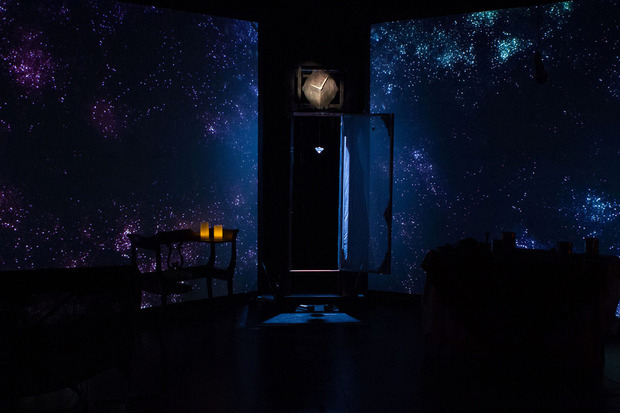
The Church of Ascension’s organ is also a major instrument that appears in multiple tracks in this album. There’s an awesome heartbeat-like low tone in “In Paradisum,” and I was wondering if you used the organ to achieve that sound?
It’s partially that and it’s also an instrument I made with LEMUR (the League of Electronic Musical Urban Robots) that used to be in Brooklyn. I did a residency with them in 2009 and I made an instrument, because I wanted to punch out a subwoofing beat percussively, on my body. I was trying to figure out what interface would be the best—stomping works, hitting my own thighs works—and realized spoons do that and seemed gesturally natural. We put a contact mic on some Swedish spoons and then we siphoned it through some software and turned it into a subwoofing bass hit—and that’s what that beat is.
What else did you record at the Church of Ascension?
The church bells—we’re the only ones on Fifth Avenue that have bells. It’s actually connected to the organ. I play the bells on Sunday at church sometimes and it’s one of my favorite things to do.
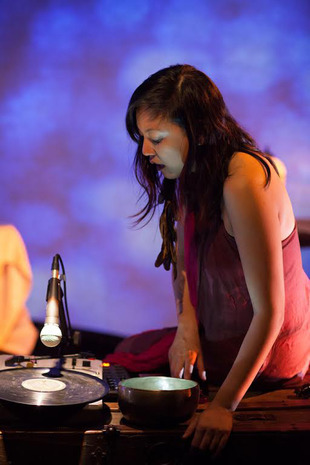
So if we pop in on a Sunday, there’s a good chance we could find you playing the bells?
You can! I also sing the Service of Meditations & Sacrament at 7pm on Sunday nights; I sing at the balcony and sometimes at the organ.
Has being surrounded by church music on a regular basis influenced the way you compose music?
Because I’m classically trained, the two lines of work that I mainly do are contracted choral work and then I do my experimental stuff. I feel really, really lucky that my church job ended up being a place that I love. It’s now become my spiritual home; it’s so different than anything I’ve ever known. The city’s heinous, the city’s really hard and it will eat you alive if you don’t have a routine that kind of grounds you. Even though it started off as a job—I’m a professional soprano there—it has become a place that, on a weekly basis, centers me. I mean, it’s a gorgeous place.
It’s a space you inhabit, but you’re also using it to create your own space in this new album.
It’s called Sunken Cathedral because it’s about music and architecture and how they really implicate each other. One is solid and one is invisible, but they really do illuminate each other. They’re both systems that organize empty air. I work a lot in site-specific, architectural places to make music for there. One of the tracks in the record was made in the McCarren Pool (when it was still abandoned), for the dance piece AGORA II. It’s called “Doppler Dreams” and it was a piece made for seven sopranos on bicycles, to ride around in the basin. There was a loop that came from the water filtration towers in the center and seven sopranos would ride around in big and small circles. Because the audience is at the pool perimeter, they would get this siren effect of sounds going by in Doppler.
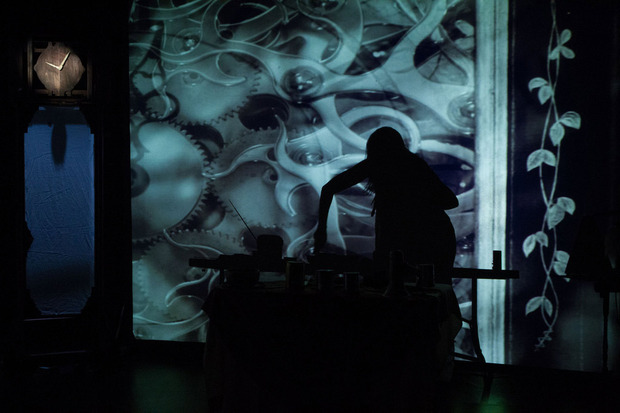
Wow, that must have been quite a bitch to record live.
I actually re-recorded it in the studio but I did gather a bunch of bike bells that dinged in A♭major, or A♭Mixolydian. [laughs] I know, it’s so nerdy. But the reason it’s called Sunken Cathedral is because cathedrals are built as a metaphor for the body. The swells of the organs are its lungs and the arches are its ribcage and the music of the church is like the breath or the soul of the place. So a lot of the tracks on the record are made for architectural spaces that exist like the McCarren Pool and the Park Avenue Armory and the Anne Hamilton Tower in California.
But it also then talks about that metaphor of how churches are of the body. I started thinking about how various chambers of your body hold different emotions in Chinese medicine. Your lungs are where you hold your grief, you hold your fear in your kidney, you hold your vitality in your heart. If you have problems in these organs, it’s an emotional problem also. And so the record has been designed as a way of walking through a “house” but the house is really a corporeal body. This record is literally a body of work. Each track is illuminating of each organ or chamber and each emotion—that’s my own creative construction of it.
Each track visits a different room—or people can call it chapters. So there is a track that is very white light and third eye—the balcony of the house. And there’s one that’s the basement, the roiling, Chakra one, blood-sex-family-identity, etc. “Father Time”—with Tibetan bowls and phasing metronomes—that to me is a hallway, it’s a long hallway that ends in a grandfather clock. I think of music very spatially; about what type of room do I want to create for the listener. Is it big and wide, or are we really visceral and super close and tactile and we’re going to fuck with them? I always try to think of what scale of space are we in. What time period are we in? Is it a real space, is it a surreal space?
Sunken Cathedral is now available digitally for $15. On 14 May 2014, an interactive visual version of the album will be released through the new platform called the Gralbum Collective. Finally, it will release as a double LP vinyl from Innova Recordings on 27 May for $55, in a limited edition of 500 signed copies.
You can also purchase the digital downloads or LPs through Yoon’s Indiegogo campaign, which will support production of a live touring theatrical show.
Album cover photo by Nara Shin, all other images courtesy of the artist











